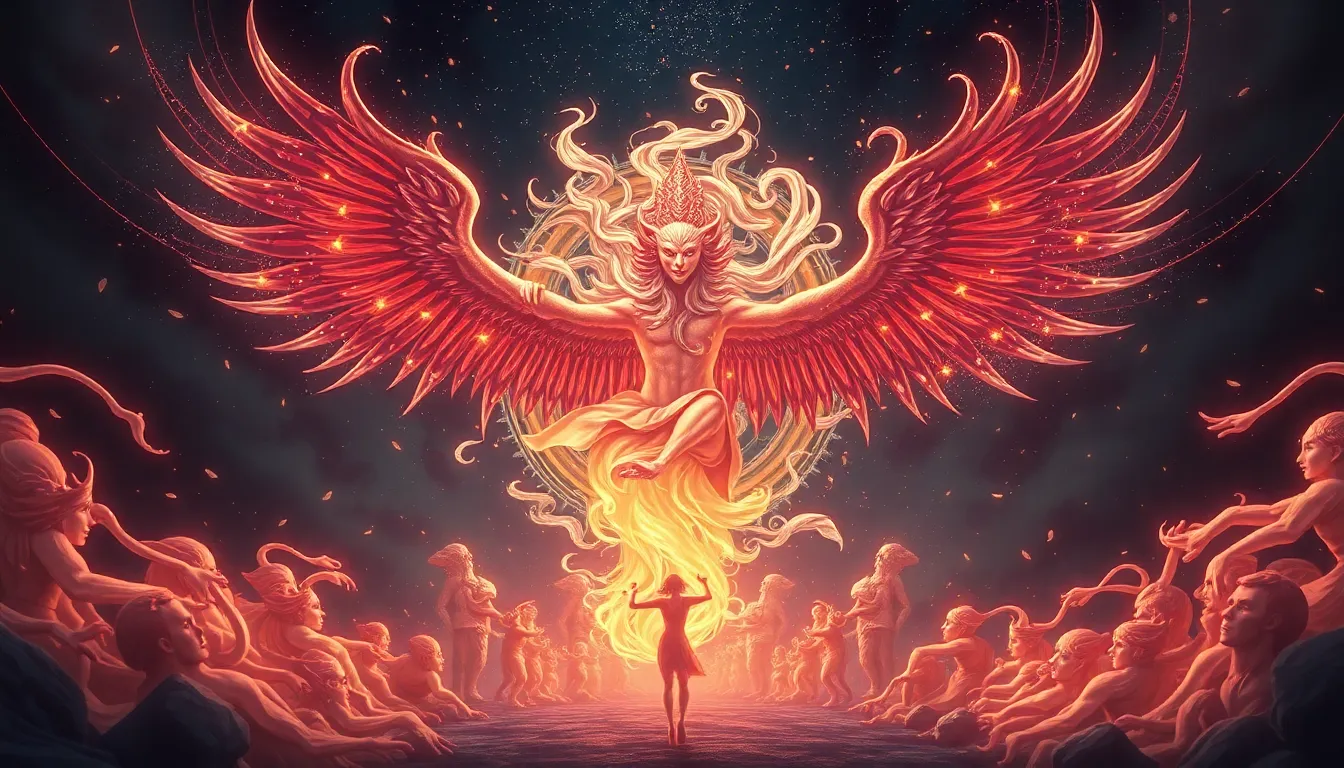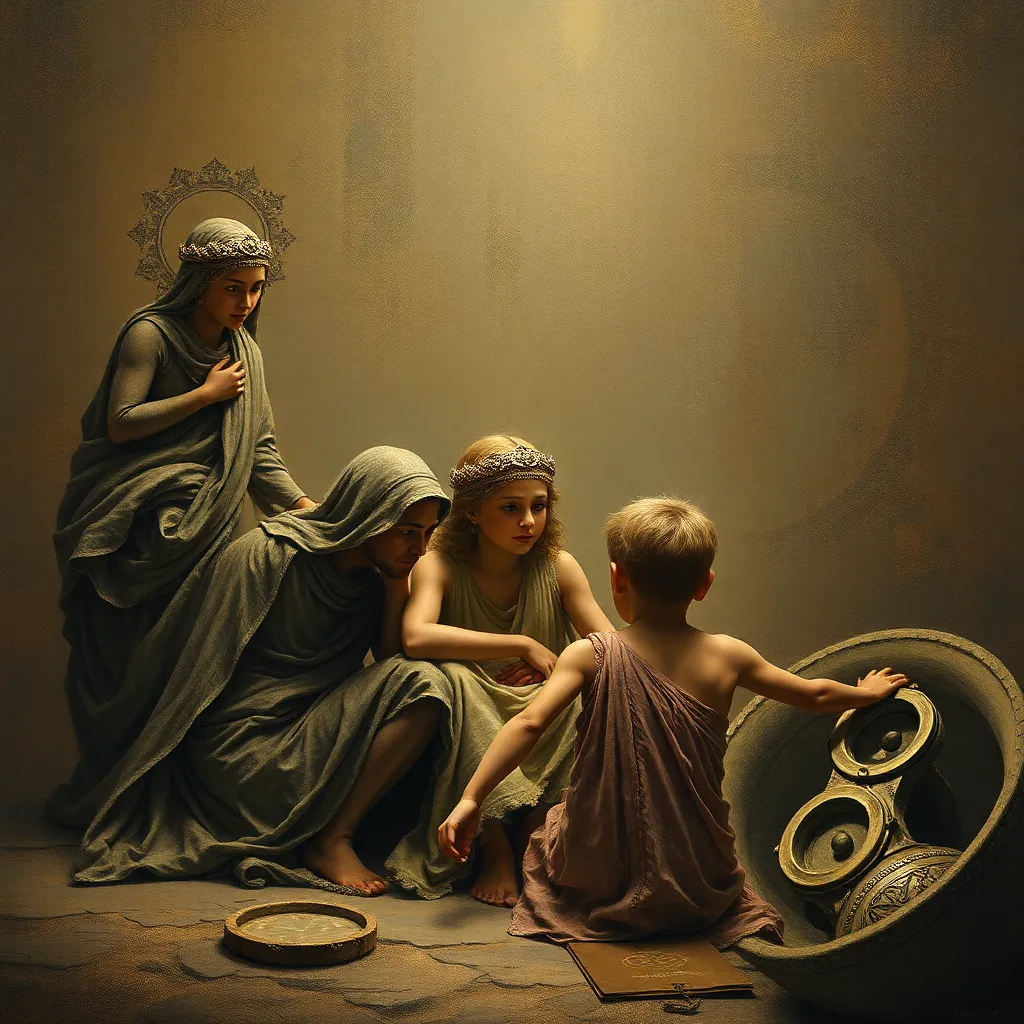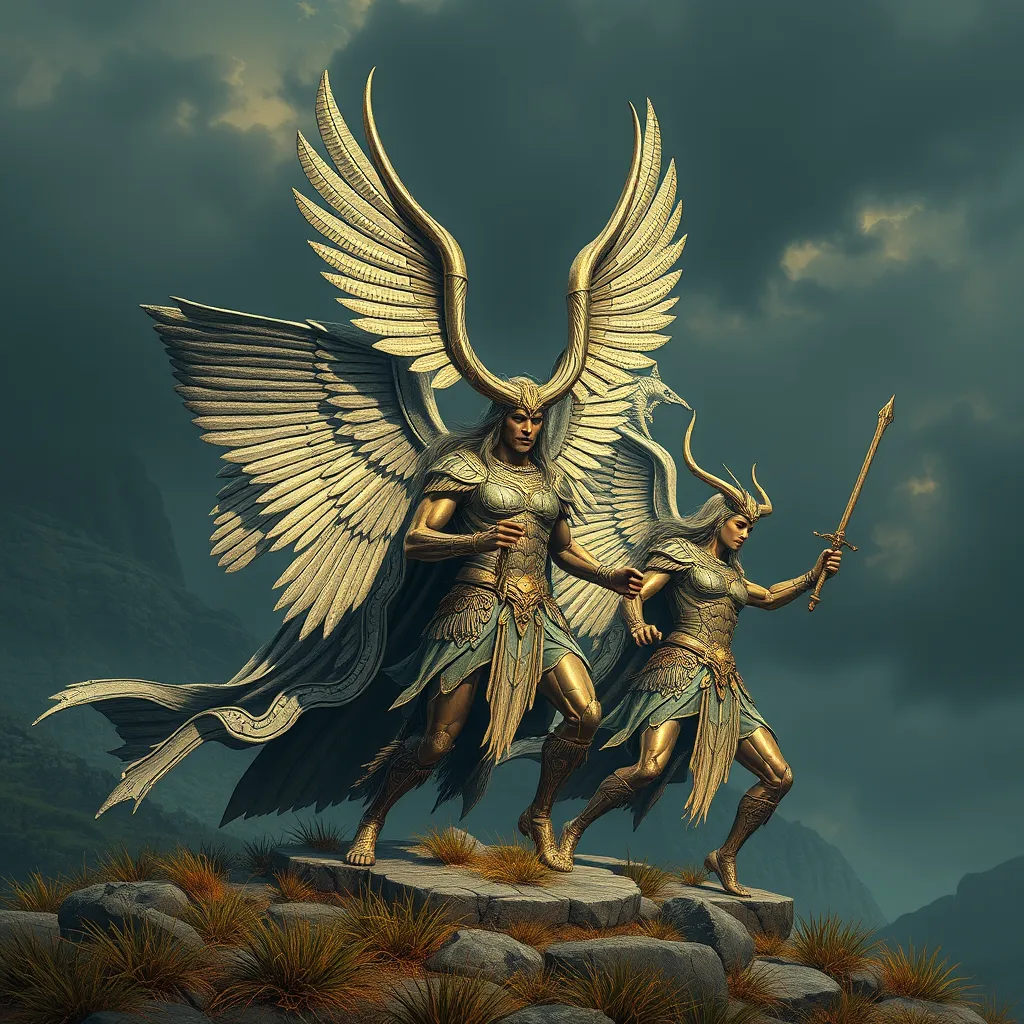The Simurgh’s Dance of Creation: A Tale of Origin and Renewal
I. Introduction
The Simurgh is a mythical creature that holds a prominent place in Persian mythology, symbolizing a deep connection between the cosmos and the natural world. This majestic bird, often depicted as a hybrid of various animals, embodies the essence of creation and renewal. The dance of the Simurgh serves as a profound metaphor for the cycles of life, death, and rebirth, showcasing the intricate relationship between movement and the act of creation. In this article, we will explore the mythological background of the Simurgh, the significance of its dance, and the themes of renewal and transformation it encapsulates.
II. The Mythological Background of the Simurgh
The origins of the Simurgh can be traced back to ancient Persian texts, where it is depicted as a benevolent creature with immense wisdom and power. It is often associated with the elements of fire and water, representing the duality of destruction and creation.
- Origins in Persian mythology: The Simurgh is believed to have roots in Zoroastrianism, where it is known as “Simurgh” or “Simorgh,” symbolizing purity and healing.
- Characteristics and symbolism: This mythical bird is often described as having the head of a dog, the body of a peacock, and the wings of an eagle. Its feathers are said to possess magical properties, capable of curing ailments and granting wisdom.
- The role of the Simurgh in various cultural narratives: The Simurgh appears in numerous Persian literary works, including the Shahnameh by Ferdowsi, where it aids heroes and embodies the ideals of justice and protection.
III. The Dance as a Metaphor for Creation
Dance has long been a significant aspect of ancient cultures, often serving as a ritualistic expression of connection to the divine. The Simurgh’s dance is no exception, embodying the cosmic order and the flow of creation.
- The significance of dance in ancient cultures: Dance has been used as a form of storytelling and communication, conveying emotions, history, and spiritual beliefs.
- How the Simurgh’s dance reflects the cosmic order: The fluid movements of the Simurgh symbolize the rhythm of the universe, illustrating how all elements of existence are interconnected.
- The intertwining of movement and creation in the myth: Each twist and turn of the Simurgh’s dance mirrors the cycles of nature, demonstrating that creation is a dynamic and ongoing process.
IV. Themes of Renewal and Transformation
The dance of the Simurgh encapsulates profound themes of renewal and transformation, highlighting the cyclical nature of existence.
- The cycle of life and death represented in the dance: The dance illustrates how death is not an end but a precursor to new beginnings, emphasizing the importance of embracing change.
- The rebirth of nature through the Simurgh’s influence: As the seasons change, the Simurgh’s dance signifies the renewal of the earth, fostering growth and regeneration.
- Parallels with other cultural myths of renewal: Similar themes can be found in various mythologies worldwide, where deities or mythical creatures symbolize rebirth and transformation.
V. The Influence of the Simurgh on Art and Literature
The Simurgh has inspired countless artists and writers throughout history, leaving a lasting impact on Persian culture and beyond.
- Depictions of the Simurgh in Persian poetry: Poets like Rumi and Attar have celebrated the Simurgh as a symbol of divine love and spiritual awakening, often using it as a metaphor for the soul’s journey.
- Artistic representations of the Simurgh’s dance: Visual artists have captured the grace and majesty of the Simurgh in paintings, sculptures, and tapestries, portraying its dance as a celebration of creation.
- Modern interpretations and adaptations of the myth: Contemporary literature and art continue to reinterpret the Simurgh’s story, exploring themes of identity, belonging, and the search for meaning.
VI. Lessons from the Simurgh’s Dance
The tale of the Simurgh offers valuable insights applicable to our modern lives, emphasizing resilience, transformation, and the beauty of change.
- Insights on resilience and transformation: The Simurgh’s journey teaches us that adversity can lead to profound growth and that embracing challenges can foster personal evolution.
- The importance of embracing change and renewal: Just as the Simurgh’s dance signifies the cyclical nature of life, we are encouraged to welcome change as an integral part of our existence.
- The universal relevance of the tale in contemporary society: The themes of the Simurgh resonate in today’s world, reminding us of the interconnectedness of all life and the potential for rebirth in our lives.
VII. The Simurgh in Contemporary Context
As interest in mythological narratives revives, the Simurgh remains a potent symbol in various contemporary contexts.
- The revival of interest in mythological narratives: In an age of globalization, there is a growing appreciation for cultural myths as they offer insights into human experiences and collective wisdom.
- The Simurgh as a symbol in modern environmental movements: The Simurgh’s connection to nature and renewal has inspired environmental advocates who draw parallels between the myth and the need for ecological restoration.
- The impact of globalization on the understanding of the Simurgh: As cultures intersect, the Simurgh’s narrative has found new audiences, adapting to various cultural contexts while retaining its core message of renewal and transformation.
VIII. Conclusion
In conclusion, the Simurgh’s dance is a powerful symbol of creation and renewal, encapsulating timeless themes that resonate across cultures and eras. Its significance in mythology underscores the importance of understanding and appreciating our cultural narratives, as they offer insights into the human experience. As we navigate the complexities of modern life, the enduring power of the Simurgh reminds us of the beauty of transformation and the promise of rebirth. We are encouraged to explore these rich traditions and reflect on their relevance in our present-day world.



